Stellantis' Electric Vehicle Plans Are Huge (And Its Taglines Are Silly)
Stellantis – the combined forces of Fiat Chrysler Automobiles and PSA Group – is setting out its electric vehicle roadmap, and, dodgy marketing slogans aside, there's a lot to like about its vision of EVs. By 2030, Stellantis says, more than 40-percent of US sales and over 70-percent of European sales will be of low-emission vehicles, coaxing drivers out of their internal combustion cars and SUVs with the promise of up to 500 miles of range and speedy charging.
To get there, it'll spend more than 30 billion euro ($36 billion) through 2025 on electrification and software. There'll be in-house development of EV hardware, software systems, infotainment and connectivity, and more, along with partnerships with third-party developers and specialists, Stellantis says.
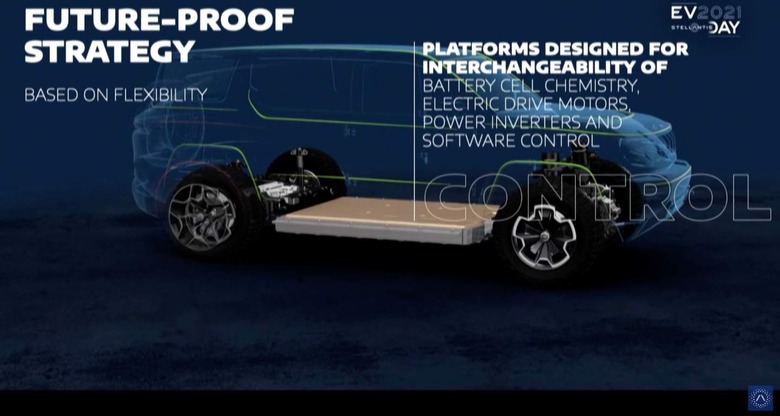
Stellantis will have four electric platforms
With 14 brands to accommodate, unsurprisingly Stellantis isn't looking to a single EV platform to take care of every possible electric vehicle. Instead, there'll be four, each designed with as much flexibility as possible, but scaled to suit different categories.
Each platform will support customization in length and width, and there'll be component sharing across the four. Stellantis says it can support production of up to 2 million units of each platform per year.
There'll also be three electric drive modules, or EDM, which package the motor, gearbox, and inverter. These can be "easily scaled" to suit different vehicle requirements, Stellantis says, as well as to power front-drive, rear-drive, all-wheel drive, and 4xe hybrid configurations.
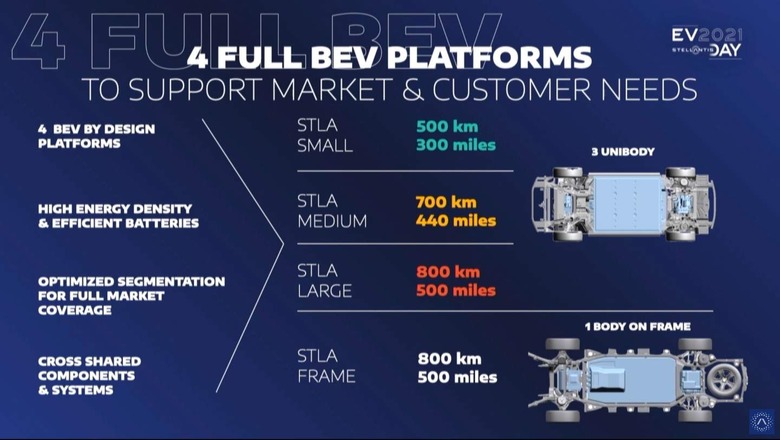
As for the batteries to drive those motors, there'll be two versions in use by 2024, Stellantis says. That will include a high energy-density option, and a nickel cobalt-free alternative. By 2026, the automaker hopes to launch its first solid state battery option, too.
For charging, figure on DC fast charging support for adding up to 20 miles of range every minute.
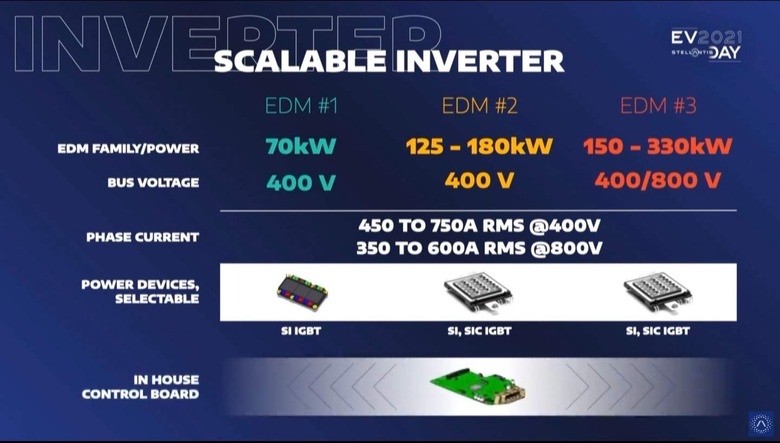
Four platforms, 14 brands, and some very different EVs
Clearly, not all Stellantis-family EVs will have the same priorities. Jeep is looking to electric off-roaders and fanciful technology like autonomous drive; Dodge, meanwhile, wants to deliver Hellcat performance with zero-emissions. The goal, therefore, will be maximizing individuality while taking advantage of the shared architectures.
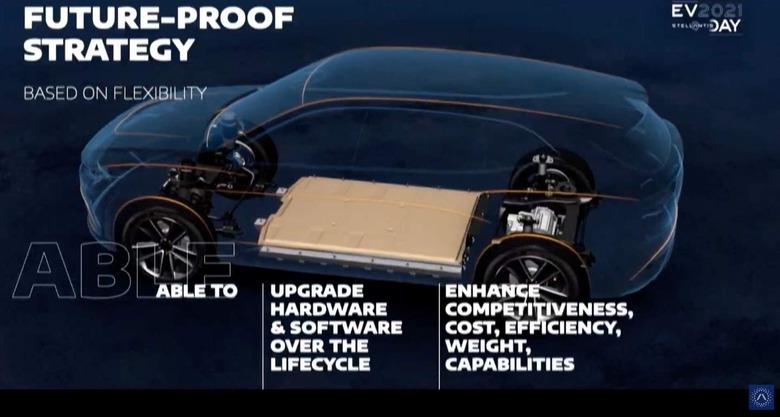
The good news is that a lot of that can be done with software. "Stellantis will develop software and controls in-house to maintain the characteristics unique to each brand," the automaker said today. That could mean dialing in perkier low-speed performance for a Fiat city EV based on STLA Small, for example, while a Maserati luxury EV sedan built on STLA Medium might have be dialed-in as a grand tourer.
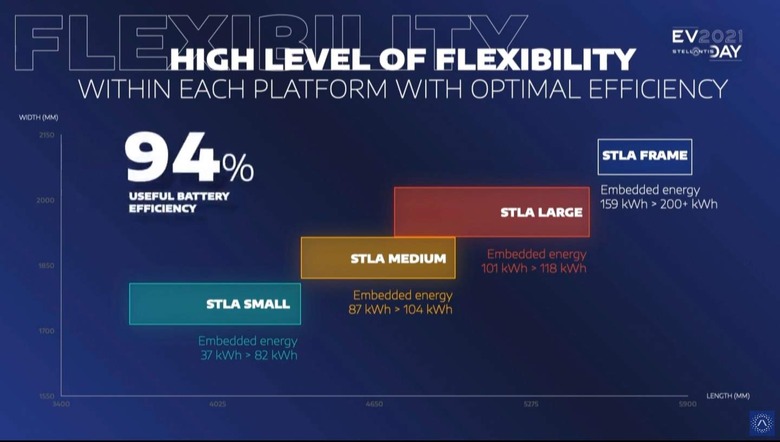
There'll also be room for progressive improvement over the lifespan of vehicles. "A program of hardware upgrades and over-the-air software updates will extend the life of the platforms well into the next decade," Stellantis says, tapping things like over-the-air (OTA) updates.
Stellantis' slogans aren't as good as its EV platforms
Stellantis' electric vehicle platforms sound pretty competitive, but when it comes to the marketing things get a little... cheesier. The automaker has fourteen new slogans "expressing the electrification approach of each brand," and they range from sensible to, well, a little ridiculous.
Abarth – "Heating Up People, But Not the Planet"
Alfa Romeo – "From 2024, Alfa Becomes Alfa e-Romeo"
Chrysler – "Clean Technology for a New Generation of Families"
Citroën – "Citroën Electric: Well-Being for All!"
Dodge – "Tear Up the Streets... Not the Planet"
DS Automobiles – "The Art of Travel, Magnified"
Fiat – "It's Only Green When It's Green for All"
Jeep® – "Zero Emission Freedom"
Lancia – "The Most Elegant Way to Protect the Planet"
Maserati – "The Best in Performance Luxury, Electrified"
Opel/Vauxhall – "Green is the New Cool"
Peugeot – "Turning Sustainable Mobility into Quality Time"
Ram – "Built to Serve a Sustainable Planet"
Commercial Vehicles – "The Global Leader in e-Commercial Vehicles"
Still, as trade-offs go, we'd rather have a decent electric architecture and middling taglines than the opposite. Stellantis says it expects the total cost of ownership for EVs to be equivalent to that of internal combustion engine vehicles by 2026.
